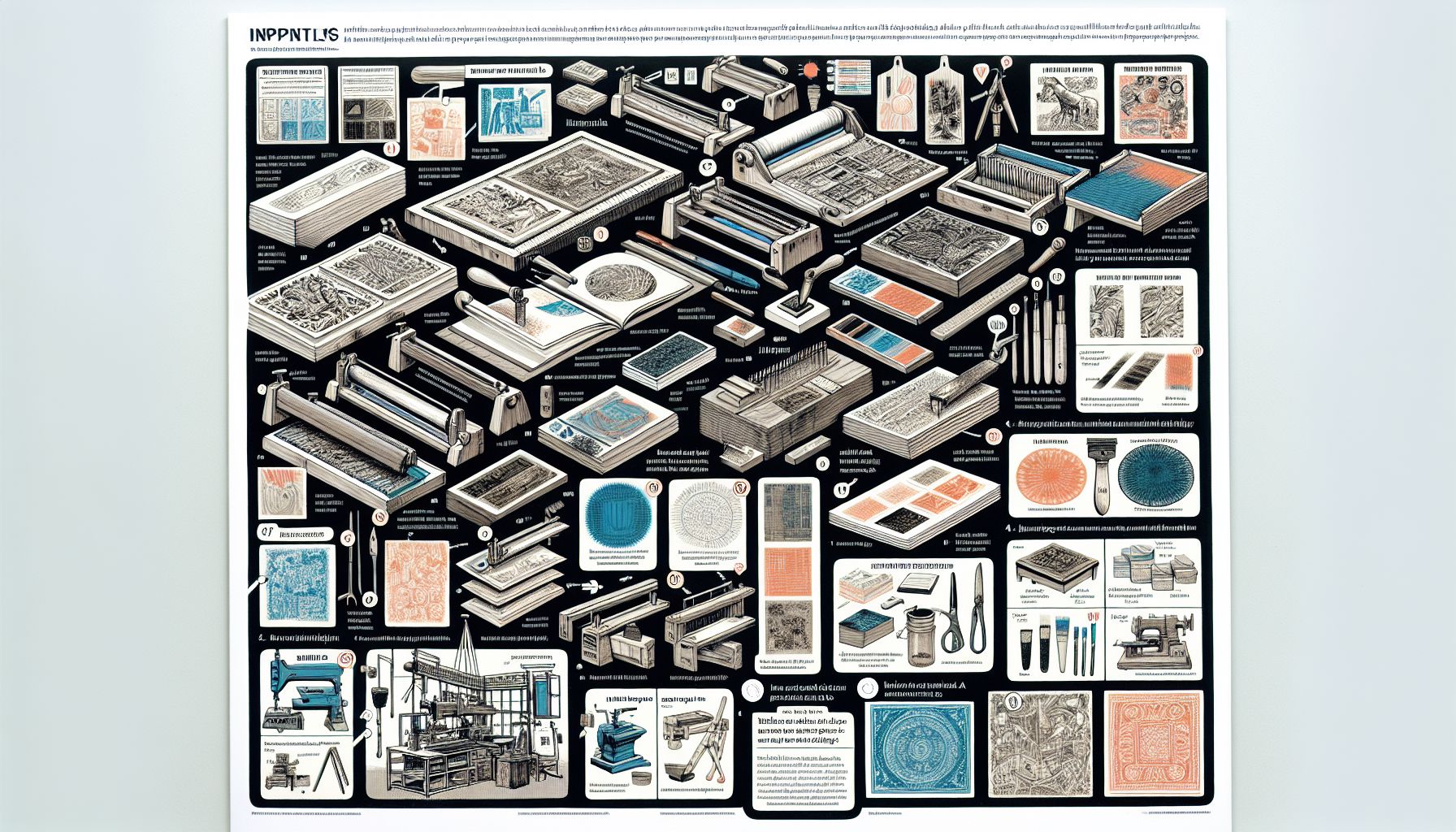Printing Techniques: A Comprehensive Guide for Creative Professionals
Introduction:
Printing techniques have come a long way since its inception, revolutionizing the way we create designs and convey messages. Whether you’re a graphic designer, artist, or simply interested in the world of printing, understanding the diverse range of printing techniques available today is essential. In this article, we will explore some of the most popular and innovative printing techniques, highlighting their unique features, advantages, and potential applications. So, let’s dive into the fascinating world of printing techniques!
Table of Contents
- Chapter 1: Traditional Printing Techniques
a. Offset Printing
b. Letterpress Printing
c. Gravure Printing - Chapter 2: Modern Printing Techniques
a. Digital Printing
b. Screen Printing
c. Flexography - Chapter 3: Specialized Printing Techniques
a. 3D Printing
b. Thermographic Printing
c. Embossing and Debossing - Chapter 4: Evolution in Printing Techniques
a. UV Printing
b. Dye-Sublimation Printing
c. Laser Printing - Conclusion
Chapter 1: Traditional Printing Techniques
a. Offset Printing:
Offset printing, also known as lithography, is one of the most widely used printing techniques due to its versatility in producing high-quality prints at a relatively low cost. The process involves transferring an inked image onto a rubber blanket, which is then pressed onto the printing surface. Offset printing is ideal for projects requiring precise color reproduction and large print runs, such as brochures, magazines, and packaging materials.
b. Letterpress Printing:
Letterpress printing, with its rich history dating back to the Gutenberg era, continues to captivate designers and artists for its distinct aesthetic appeal. The technique involves transferring inked raised surfaces of metal plates or type onto paper, creating an impression. Letterpress printing is renowned for its tactile feel, deep impression, and vintage charm. It is often used for business cards, wedding invitations, and art prints.
c. Gravure Printing:
Gravure printing, also known as intaglio printing, utilizes engraved or etched plates to transfer ink onto paper. This method is known for producing exceptional image detail and a wide range of tonal values. Gravure printing is commonly employed for high-volume projects such as newspapers, magazines, and packaging where consistent, high-quality, and cost-effective reproduction is essential.
Chapter 2: Modern Printing Techniques
a. Digital Printing:
Digital printing has drastically transformed the printing industry by allowing fast and cost-effective production of small print runs with exceptional color accuracy. This technique involves directly transferring digital files onto various printing substrates, eliminating the need for costly and time-consuming setup processes. Digital printing is ideal for personalized marketing materials, variable data printing, and on-demand printing.
b. Screen Printing:
Screen printing, also known as silk screening, involves pushing ink through a fine mesh screen onto the printing surface. It is highly versatile and suitable for a wide range of materials, including fabric, glass, wood, and metals. Screen printing enables vibrant and long-lasting prints, making it a popular choice for apparel, posters, signage, and promotional items.
c. Flexography:
Flexography, commonly referred to as flexo printing, is a high-speed printing technique that utilizes flexible relief plates to transfer ink onto various substrates. This method is particularly well-suited for printing on packaging materials, labels, and tags. Flexography provides excellent color reproduction and is capable of printing on uneven or non-porous surfaces.
Chapter 3: Specialized Printing Techniques
a. 3D Printing:
3D printing, also known as additive manufacturing, has revolutionized the manufacturing industry by enabling the creation of three-dimensional objects from digital models. This incredible technique builds objects layer by layer using materials such as plastic, metal, or even food. 3D printing finds applications in various fields, including prototyping, jewelry, medical implants, and architectural models.
b. Thermographic Printing:
Thermographic printing is a process that creates raised text or images with a glossy appearance. This technique involves applying a special powder to wet ink and heating it, causing the powder to swell and create an embossed effect. Thermographic printing is popular for wedding invitations, business cards, and high-end stationery.
c. Embossing and Debossing:
Embossing and debossing are printing techniques that create raised or recessed images, respectively, on paper or cardstock, adding depth and texture to printed materials. These techniques are often combined with other printing methods, such as letterpress or offset, to create visually appealing effects on business cards, packaging, and art prints.
Chapter 4: Evolution in Printing Techniques
a. UV Printing:
UV printing utilizes ultraviolet light to instantly dry and cure inks or coatings, resulting in vibrant colors and enhanced durability. This technique allows for printing on a wide range of surfaces, including wood, glass, metal, and plastics. UV printing is widely used in signage, retail displays, and customizable products due to its quick turnaround time and excellent visual impact.
b. Dye-Sublimation Printing:
Dye-sublimation printing is a method that involves transferring dye onto materials using heat. This technique is particularly popular for printing on fabrics and apparel, resulting in durable, vibrant, and fade-resistant prints. Dye-sublimation printing is widely used for creating custom sportswear, banners, and exhibition displays.
c. Laser Printing:
Laser printing, commonly used in offices and homes, uses electrostatic energy to transfer toner onto paper or other materials. This technique provides fast printing speeds and high-quality results. Laser printing is ideal for documents, brochures, and marketing materials that require crisp text and images.
Conclusion
Printing techniques have evolved significantly throughout history, offering creative professionals innumerable options to bring their ideas to life. From traditional methods like offset printing and letterpress, to modern techniques like digital printing and screen printing, each method brings its own set of advantages and unique characteristics. Specialized techniques like 3D printing, embossing, and thermographic printing continue to push the boundaries of what is possible in creative expression.
As technology advances, we can expect the printing industry to continue to innovate and introduce new techniques. With a deep understanding of the vast range of printing techniques available, designers and artists can unleash their creativity and deliver exceptional results for their clients and audiences. So, embrace the world of printing techniques, experiment, and explore the limitless possibilities that await you!

